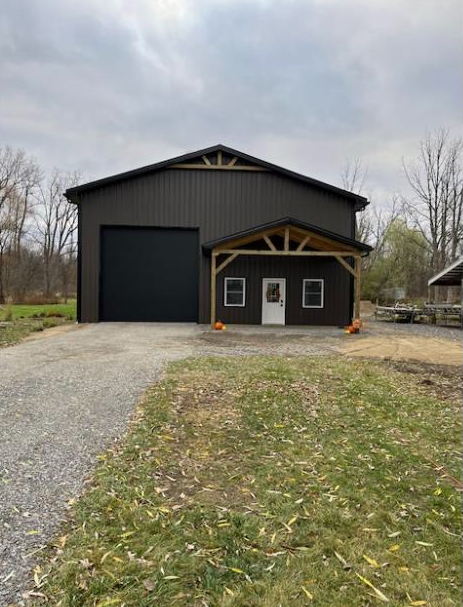Parcel Theory and More Thoughts on Dave’s Insulation Dilemma
Reader DAVE in GALES CREEK writes:
“You said: Because Code requires an inch of clear space between insulation and roof deck, from eave-to-ridge.
Keep in mind that we have no roof deck or plywood, just bare bones metal and rafters. Okay,.. so with all of that in mind, wouldn’t insulating just the bottom of the rafters and leaving a cavity that’s open to the rest of the shop on one end allow for adequate air exchange to avoid condensation, as it does now?
Or to put 2″ thick rockwool batts between the rafters, still leaving 2″-3″ of open air space.
I understand the ceiling, roofing ventilation. Everything you’ve mentioned is exactly what I’ve been taught too. But I’m finding that pole barns don’t always apply to the same rules. Taking all that you said into consideration about ceilings, I would have to ask why is it that the upper areas of the walls are not subject to the same rules? I mean, at least the top 2ft of the walls are close enough to the ceiling to receive the same heat rising / pooling and escaping vapor. With the same metal sheathing, same insulation, etc. The tops of the walls are unvented, yet they’ve had no condensation, mold or an other problems? I’ve just been trying to understand this for some time now. I have my theories, but that’s all they are.
I understand that spray foam is optimal, but as mentioned spray foam is not an option. Tearing out the old vinyl backed insulation would actually be fairly easy to remove in less that 2hrs, so that’s really not a problem at all. As for a suspended ceiling with blown in insulation, there’s no room with the tall cargo doors that are several feet above the eves on the end wall. And there isn’t enough structure to accommodate the added weight without building interior walls to support it. Even then, we’d run into several problems with the RV sized cargo doors being higher than the eves, so it’s no possible without going to extremes and you’d still end up with dead space.
I really have tried hard to solve this before contacting you guys. Promise. :-)”
Mike the Pole Barn Guru says:
Laws of Physics do not change just because a building is steel clad post-frame.
Parcel theory explains what is occurring:
“Warm air rises” is common knowledge. While it is correctly understood warm air rises because it is lighter than cooler air, density difference alone doesn’t explain why it rises. A fundamental process explains cause.
Warm air has lower density compared to cooler air, and as temperature increases, air density decreases. However, even air of a lower density will not begin to rise by itself.
Isaac Newton’s first law of motion explains velocity of an object will remain constant unless another force is exerted on this object. A more common way of saying this is “an object at rest stays at rest and an object in motion stays in motion unless acted upon by an outside force.” This is why decreasing density alone is not enough to cause air to rise – there must be a force exerted on air to begin its motion.
That force is gravity. Gravity pulls cooler, denser air toward Earth’s surface. As denser air reaches Earth’s surface, it spreads out and undercuts less dense air, in turn forcing less dense air up and into motion, causing it to rise.
When this warm, moist air comes in contact with cooler roof steel, condensation forms on underside of this non-absorptive surface. A well-sealed air-impermeable thermal break will prevent condensation from occurring on underside of your steel roofing (steel roofing is a roof deck).
If your current vinyl backed insulation (actually a condensation control blanket) has an air permanence equal to or less than 0.02 L/s-m^2 at 75 Pa, facing is well-sealed and without punctures, you may be able to successfully add unfaced Rockwool batts between purlins below it. You will want to entirely fill cavity, without any dead air space between insulation and vinyl facing above.
Upper areas of your walls are not experiencing condensation as this warm moist air is collecting at roof peak. If a scenario could exist where it could be cold enough outside, warm enough inside and interior humidity was extremely high, you could experience condensation along tops of walls.








